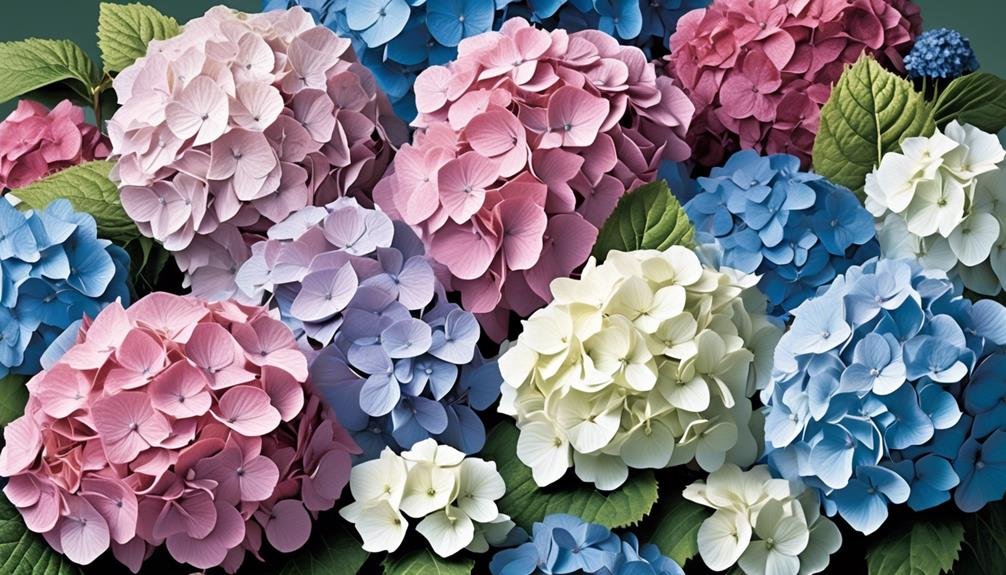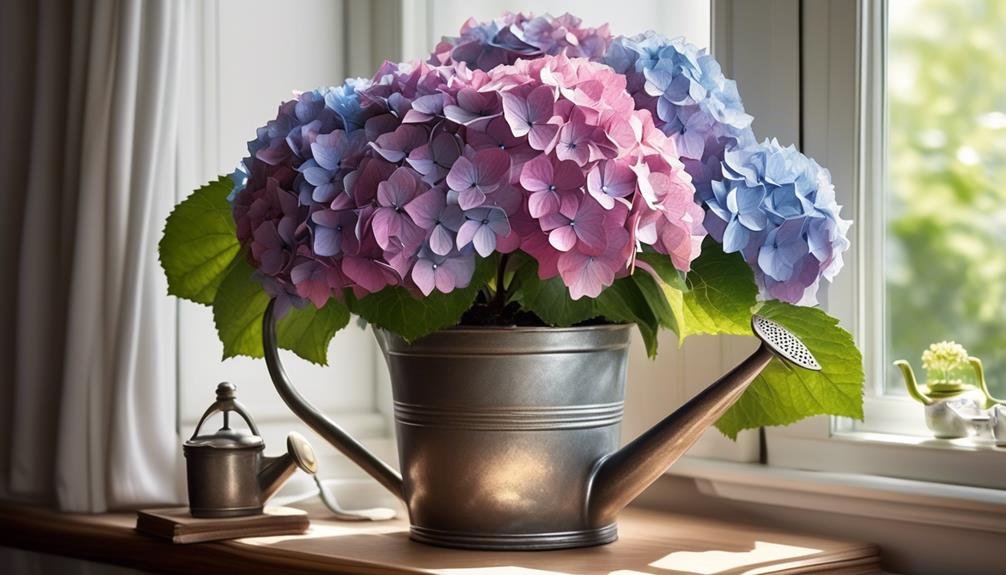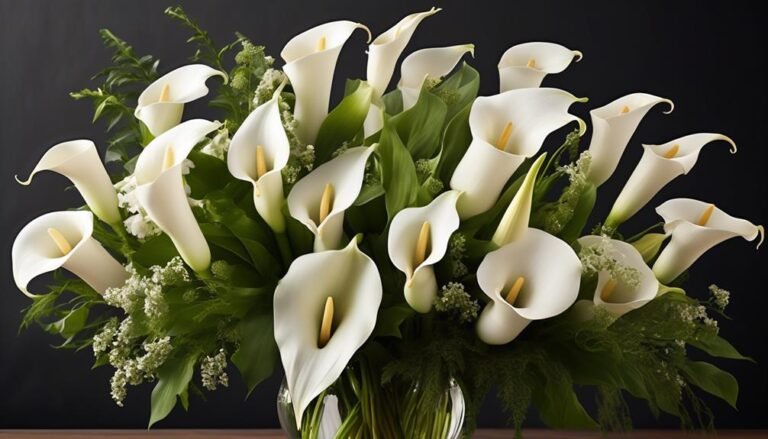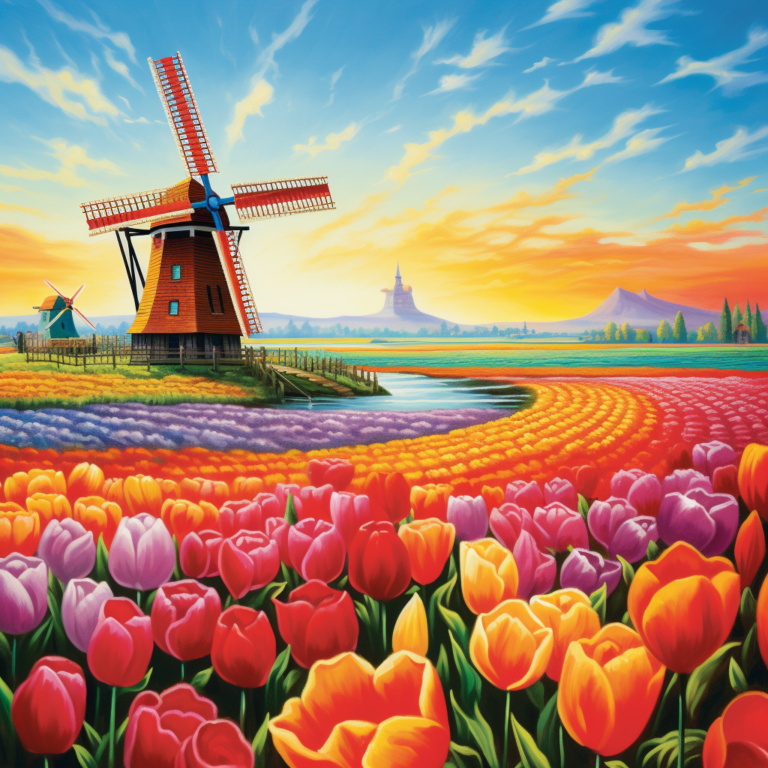Popular Types of Florist Flowers – Hydrangea
Hydrangeas are a popular choice among florists due to their captivating beauty and unique characteristics. These voluminous blooms are a study in contrasts, exuding both strength and fragility. Understanding the secrets of their cultivation and care can elevate floral arrangements to new heights.
Color Alteration: Hydrangeas are known for their ability to change color based on the pH level of the soil. Acidic soil produces blue flowers, while alkaline soil results in pink ones. To achieve specific colors, florists can manipulate the soil pH or use aluminum sulfate for blue blooms and lime for pink blooms.
Preservation Techniques: To preserve the ethereal beauty of hydrangeas, florists can air dry the blooms by hanging them upside down in a dark, dry area. Another method involves using a mixture of water and glycerin to replace the sap in the stems, resulting in long-lasting, preserved hydrangeas.
Cultivation Insights: Hydrangeas thrive in well-draining soil and partial shade, making them versatile and adaptable to various growing conditions. Proper pruning and watering are essential for healthy growth, and the use of organic fertilizer can promote vibrant blooms.
Exploring the World of Hydrangeas: The world of hydrangeas is ripe for exploration, offering a fascinating journey into the intricacies of these blooms. From understanding their color variations to mastering preservation techniques, florists can uncover surprises and enhance their floral artistry with the allure of hydrangeas.
Scientific Name
Hydrangeas fall under the genus Hydrangea, encompassing diverse species such as Hydrangea macrophylla, Hydrangea arborescens, and Hydrangea paniculata. These species exhibit unique characteristics in leaf shape, flower structure, and growth habits, crucial for differentiation and categorization. The taxonomy of hydrangeas provides insights into their genetic makeup, growth requirements, and potential for hybridization.
The genus Hydrangea belongs to the Hydrangeaceae family, reflecting its botanical characteristics and genetic classification. This classification aids in understanding the diverse range of hydrangea species and their distinct features, facilitating effective cultivation and breeding of new varieties with desirable traits.
Understanding the taxonomy of hydrangeas is crucial for their cultivation and propagation. It provides valuable insights into their genetic makeup, growth requirements, and potential for hybridization. By delving into the taxonomy of hydrangeas, horticulturists can effectively cultivate and breed new varieties with desirable traits.
Background History
Hydrangeas have a rich history that spans centuries, originating in Japan and later gaining popularity in Western gardens. The Japanese art of cultivating hydrangeas, known as 'ajisai', has been practiced for centuries and continues to be cherished today. In the 1730s, the first American species of hydrangeas were introduced to the UK, marking the beginning of their cultivation in Western horticulture.
These beautiful flowers hold diverse cultural significance. In Japan, they're associated with heartfelt emotion and apology, while in Victorian times, they were linked to boastfulness and vanity. Hydrangeas are also traditionally given to mark a fourth wedding anniversary, symbolizing gratitude, grace, and abundance.
The cultivation history and varied symbolism of hydrangeas make them a fascinating subject for botanists, horticulturists, and flower enthusiasts alike.
Physical Description

Hydrangeas are known for their large, vibrant flower heads that can reach up to 8 inches in diameter. They come in a variety of colors, including white, cream, blue, and pink, with the actual color influenced by the soil's pH level. This makes them a versatile choice for floral arrangements at weddings and special occasions.
Their vase life of 7-10 days makes them perfect for events, and they can also be dried for preservation. Hydrangeas are also popular for home decor, adding elegance and natural beauty to any living space. Their lush appearance makes them an excellent choice for adding a pop of color and a sense of luxury to any room.
Colours and Characteristics
Hydrangeas are captivating flowers that come in various shades, such as pink, blue, white, and purple. The color of the hydrangea can be influenced by the soil's acidity level, with acidic soils producing blue flowers and alkaline soils producing pink ones. These flowers create a full, lush look in bouquets and arrangements, making them a popular choice for home decor and events. They're also known for their longevity, often lasting 7-10 days in a vase, due to their ability to draw water up the stem even after being cut.
Blue hydrangeas symbolize understanding and gratitude, and in some cultures, they're associated with apology and forgiveness. On the other hand, white hydrangeas symbolize purity and grace, and are often used in weddings and religious ceremonies.
The diverse colors and characteristics of hydrangeas make them an enchanting choice for floral arrangements, adding vibrancy and depth to any setting. Understanding the symbolism and color meanings of hydrangeas allows for a more thoughtful and intentional use of these beautiful flowers in various settings.
Varieties Available

Hydrangea Varieties for Floral Arrangements and Garden Landscapes
Hydrangea varieties offer a wide range of colors, shapes, and blooming characteristics, making them popular for floral arrangements and garden landscapes. Here are some popular options to consider:
- Mophead Hydrangeas: Known for their large, round flower heads, mophead hydrangeas come in beautiful shades of blue, pink, and white.
- Lacecap Hydrangeas: These hydrangeas have delicate, flat-topped blooms surrounded by smaller flowers, creating an elegant and intricate look.
- Oakleaf Hydrangeas: Stand out with cone-shaped flower clusters and stunning foliage that turns vibrant shades of red and purple in the fall.
- Peegee Hydrangeas: Also called panicle hydrangeas, they boast large, pyramid-shaped flower clusters and are beloved for their versatility in both fresh and dried floral arrangements.
These hydrangea varieties are ideal for creating captivating hydrangea arrangements in vases, larger floral displays, and wedding bouquets. With their availability in different species and cultivated types, hydrangeas offer an extensive selection for various floral needs.
Seasonal Availability
Hydrangeas are popular choices for floral arrangements and landscapes, and their seasonal availability is a key factor to consider. Here's what you need to know:
- Summer Bloom: Hydrangeas bloom during the summer months, making them ideal for weddings, outdoor events, and garden landscapes. Their vibrant blooms and lush foliage add elegance to summer arrangements.
- Off-Season Considerations: During the colder months, hydrangeas aren't typically available. It's important to explore alternative flower options for arrangements and bouquets during this time.
Understanding the seasonal availability of hydrangeas is crucial for event planning and floral designs. Hydrangeas symbolize gratitude, abundance, and heartfelt emotions, making them an ideal choice for expressing sentiments during the summer season.
Care Tips

Hydrangea Care Tips for Long-Lasting Blooms
When arranging hydrangeas, it's important to choose the right vase and follow essential care tips to maintain their freshness and vibrancy. Here's how to care for hydrangeas:
- Vase Selection: Choose a clean vase with enough room for the hydrangea stems to avoid overcrowding. A vase with a narrower neck can support the stems and prevent them from splaying out.
- Water and Flower Food: Place the hydrangeas in a clean vase with tap water and flower food to keep them nourished.
- Stem Trimming: Trim the stems by 2-3cm using strong secateurs to facilitate water absorption.
- Foliage Removal: Remove foliage below the water line to prevent bacterial growth.
- Water Maintenance: Change the water completely every two days and keep the water level topped up daily for hydration.
- Wilted Foliage: Remove any wilted foliage to maintain the overall appearance of the arrangement.
- Stem Recutting: Recut the stems every two days to ensure water uptake.
Following these care tips will help your hydrangeas stay fresh and beautiful for an extended period.
Proper vase selection and regular maintenance can significantly extend the life of these stunning blooms, allowing you to enjoy their beauty for longer.
How Do Azaleas Compare to Hydrangeas as Popular Florist Flowers?
When it comes to types of florist flowers, azaleas and hydrangeas are both popular choices. Azaleas boast vibrant colors and a longer blooming period, making them great for arrangements. Hydrangeas, on the other hand, have large, full blooms and can be easily dried for long-lasting displays. Both are beautiful options for florists.
Conclusion
Hydrangeas are a popular choice for floral arrangements due to their abundance of petals and lavish shape, making them a versatile and meaningful option.
They hold cultural significance and have a rich history, adding to their appeal as a florist flower.
Available in a variety of colors, they offer versatility for different arrangements.
With proper care and understanding of their seasonal availability, hydrangeas can make a beautiful addition to any garden or floral display.






